1 Bootloader introduction
Table 1. STM8 groups featuring a bootloader
Table 2. STM8 groups without bootloader
1.1 Bootloader activation
Table 3. Bootloader versions for which bootloader activation flowchart is valid
Figure 1. Bootloader activation flowchart
Table 4. Initial checking
2 Peripheral settings
Table 5. Serial interfaces associated with STM8 devices
2.1 USART/UARTs settings
2.1.1 LINUART/UARTs in “reply” mode settings
2.2 SPI settings
2.3 CAN settings
Figure 2. CAN frame
3 Bootloader command set
Table 6. Bootloader commands
Table 7. Bootloader codes
3.1 Get command
3.1.1 Get command via USART/LINUART/UART1/ UART2/UART3
Figure 3. Get command via USART/LINUART/UART1/UART2/UART3 - host side
Figure 4. Get command via USART/LINUART/UART1/UART2/UART3 - device side
3.1.2 Get command via SPI
Figure 5. Get command via SPI - host side
Figure 6. Get command via SPI - device side
3.1.3 Get command via CAN
Figure 7. Get command via CAN - host side
Figure 8. Get command via CAN - device side
3.2 Read memory command
3.2.1 Read memory command via USART/LINUART/UART1/2/3
Figure 9. Read memory command via USART/LINUART/UART1/UART2/UART3 - host side
Figure 10. Read memory command via USART/LINUART/UART1/UART2/UART3 - device side
3.2.2 Read memory command via SPI
Figure 11. Read memory command via SPI - host side
Figure 12. Read memory command via SPI - device side
3.2.3 Read memory command via CAN
Figure 13. Read memory command via CAN - host side
Figure 14. Read memory command via CAN - device side
3.3 Erase memory command
3.3.1 Erase memory command via USART/LINUART/UART1/2/3
Figure 15. Erase memory command via USART/LINUART/UART1/2/3 - host side
Figure 16. Erase memory command via USART/LINUART/UART1/2/3 - device side
3.3.2 Erase memory command via SPI
Figure 17. Erase memory command via SPI - host side
Figure 18. Erase memory command via SPI - device side
3.3.3 Erase memory command via CAN
Figure 19. Erase memory command via CAN - host side
Figure 20. Erase memory command via CAN - device side
3.4 Write memory command
3.4.1 Write memory command via USART/LINUART/UART1/2/3
Figure 21. Write memory command via USART/LINUART/UART1/UART2/UART3 - host side
Figure 22. Write memory command via USART/LINUART/UART1/2/3 - device side
3.4.2 Write memory command via SPI
Figure 23. Write memory command via SPI - host side
Table 8. Examples of delay
Figure 24. Write memory command via SPI - device side
3.4.3 Write memory command via CAN
Figure 25. Write memory command via CAN - host side
Figure 26. Write memory command via CAN - device side
3.5 Speed command
3.5.1 Speed command via CAN
Figure 27. Speed command via CAN - host side
Figure 28. Speed command via CAN - device side
3.6 Go command
3.6.1 Go command via USART/LINUART/UART1/UART2/UART3
Figure 29. Go command via USART/LINUART/UART1/UART2/UART3 - host side
Figure 30. Go command via USART/LINUART/UART1/UART2/UART3 - device side
3.6.2 Go command via SPI
Figure 31. Go command via SPI - host side
Figure 32. Go command via SPI - device side
3.6.3 Go command via CAN
Figure 33. Go command via CAN - host side
Figure 34. Go command via CAN - device side
3.7 Sector codes
Table 9. STM8 sector codes
3.8 Software model (STM8AF, STM8AL, STM8L and STM8S Series)
3.8.1 RAM erase/write routines
4 Error management
Table 10. Error table
5 Programming time
Table 11. USART/LINUART/UART1/UART2/UART3 programming times
Table 12. SPI programming time
Table 13. CAN programming time
Appendix A How to upgrade ROP protected device
A.1 Rules for upgrading ROP protected devices
Appendix B Bootloader entry points
Table 14. Bootloader entry points
Appendix C SPI peripheral timing options
C.1 SPI with busy state checking
C.2 Modified erase/write RAM routines
Figure 35. Delay elimination in modified RAM routines
Appendix D PC software support
Figure 36. "Flash loader demonstrator" software
Appendix E Bootloader UART limitation
E.1 Description
E.1.1 UART automatic baudrate calculation
E.1.2 Description of UART limitation
E.2 Workaround for UART limitation
Appendix F Limitations and improvements versus bootloader versions
Table 15. Description of limitation, improvements and added features
Revision history
Table 16. Document revision history
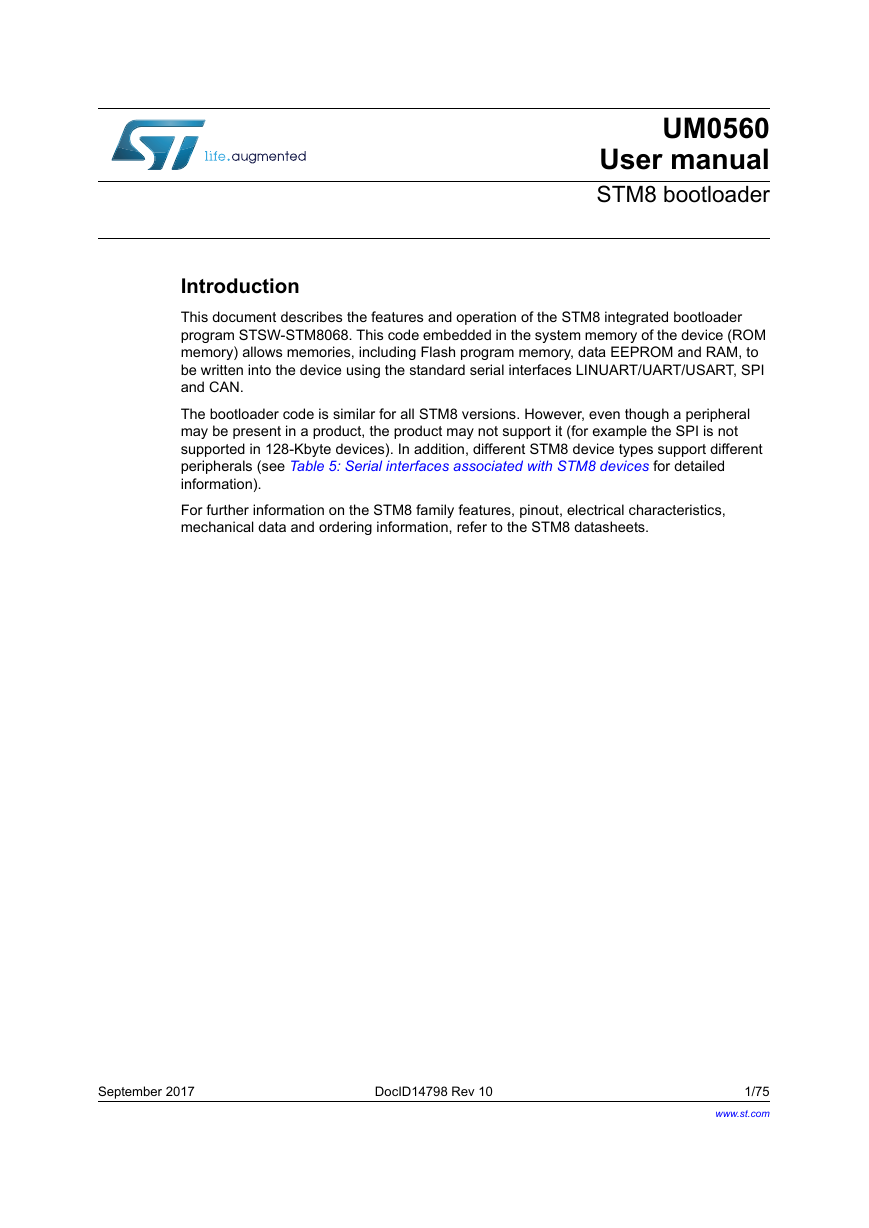
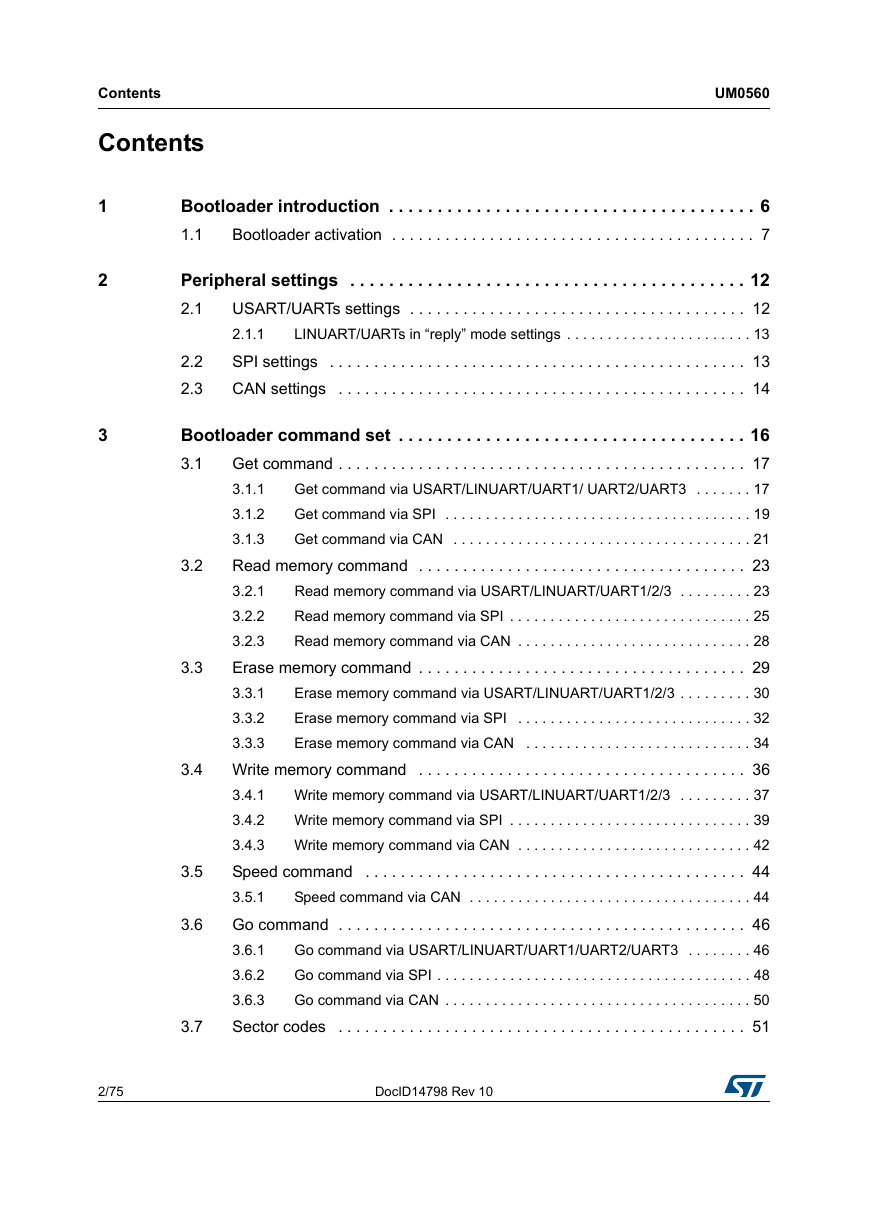
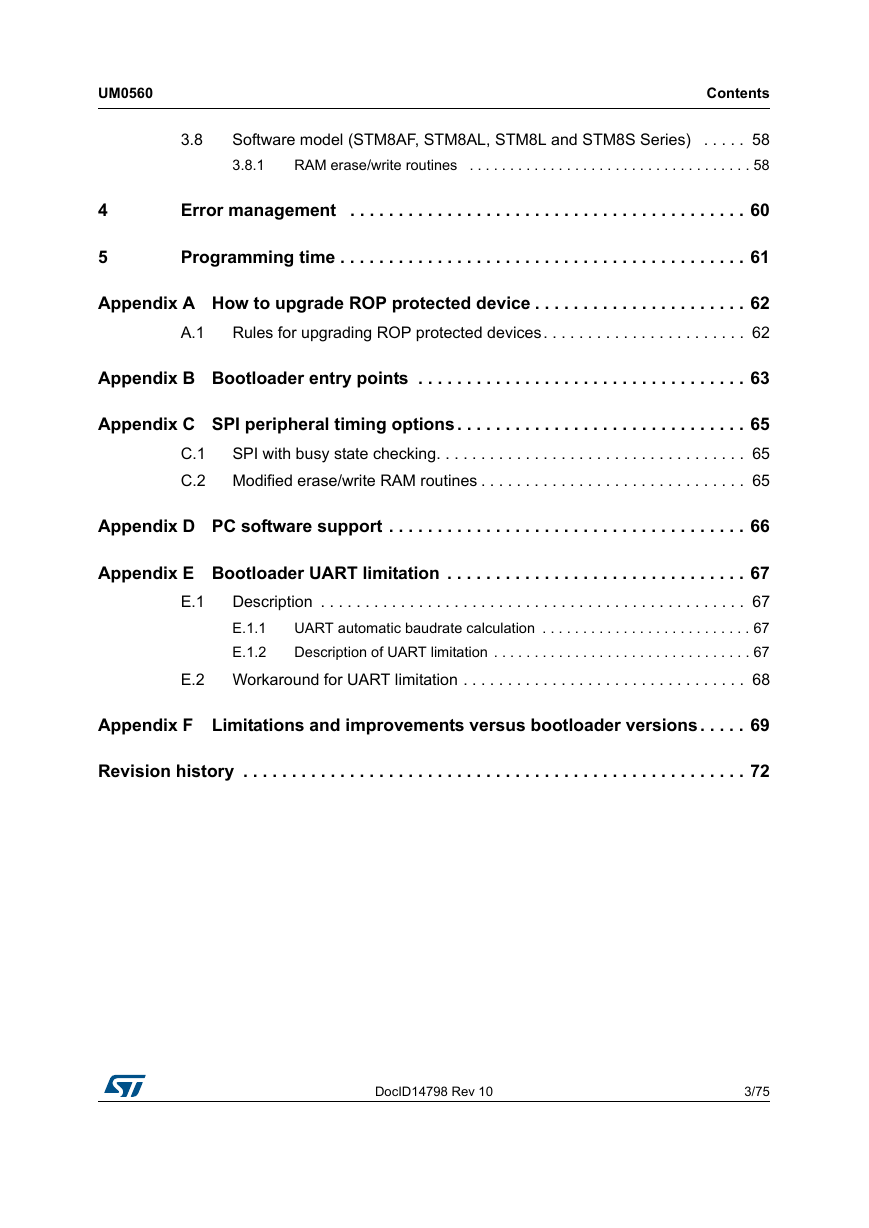
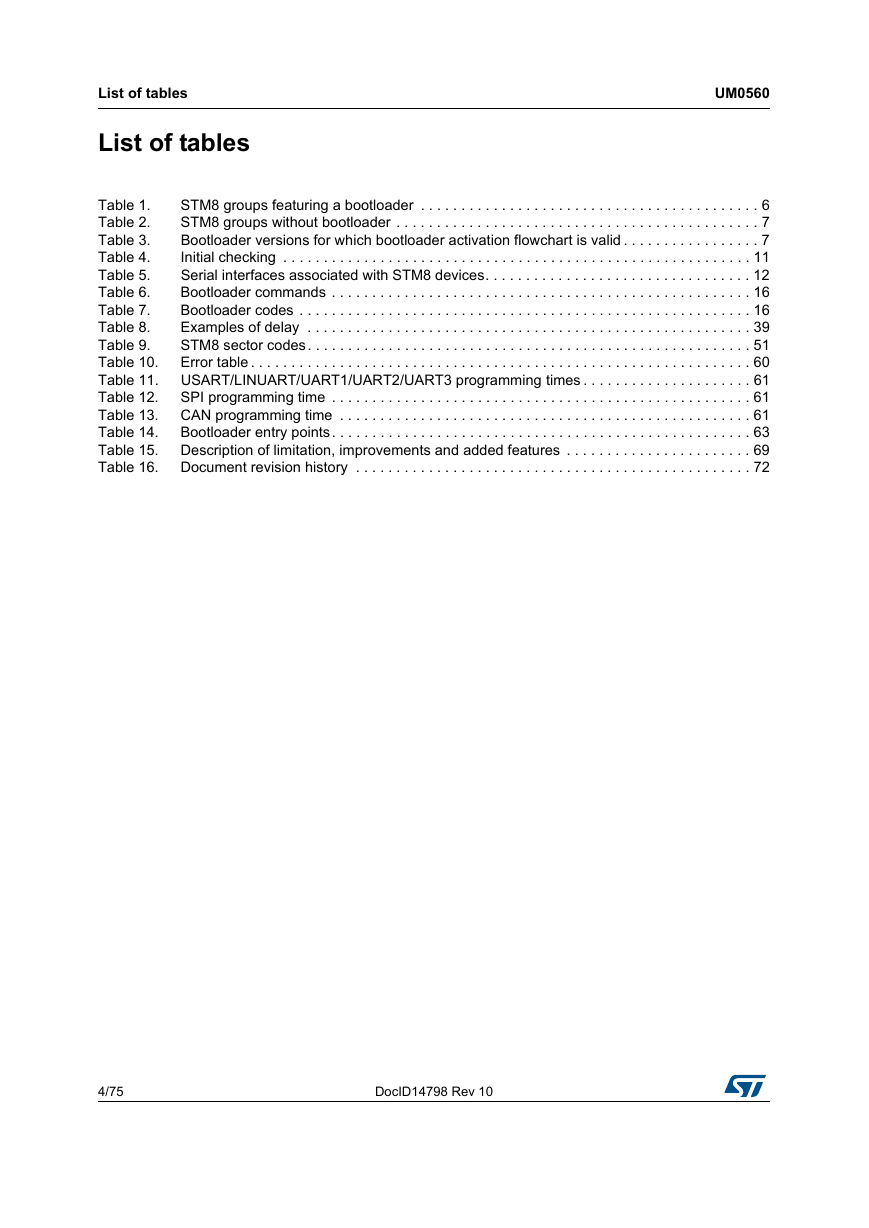

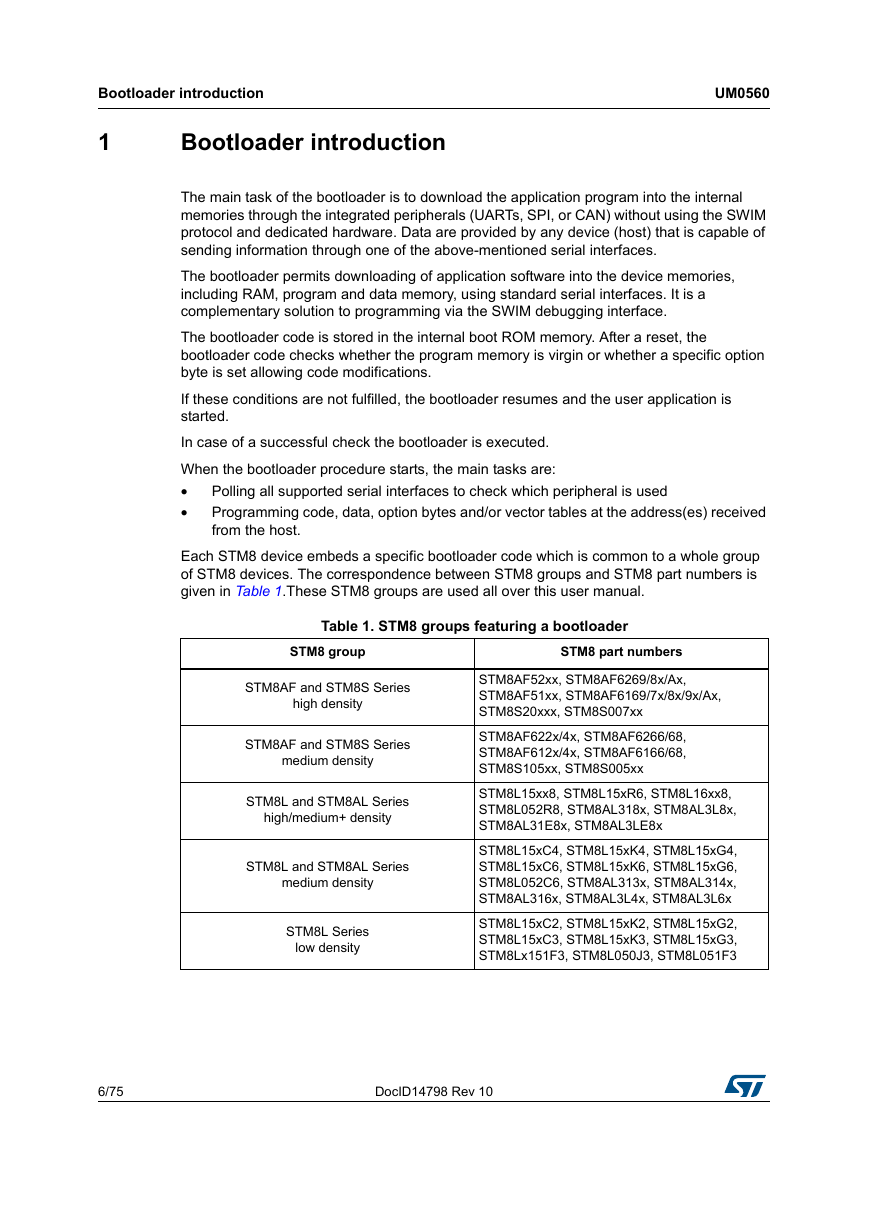
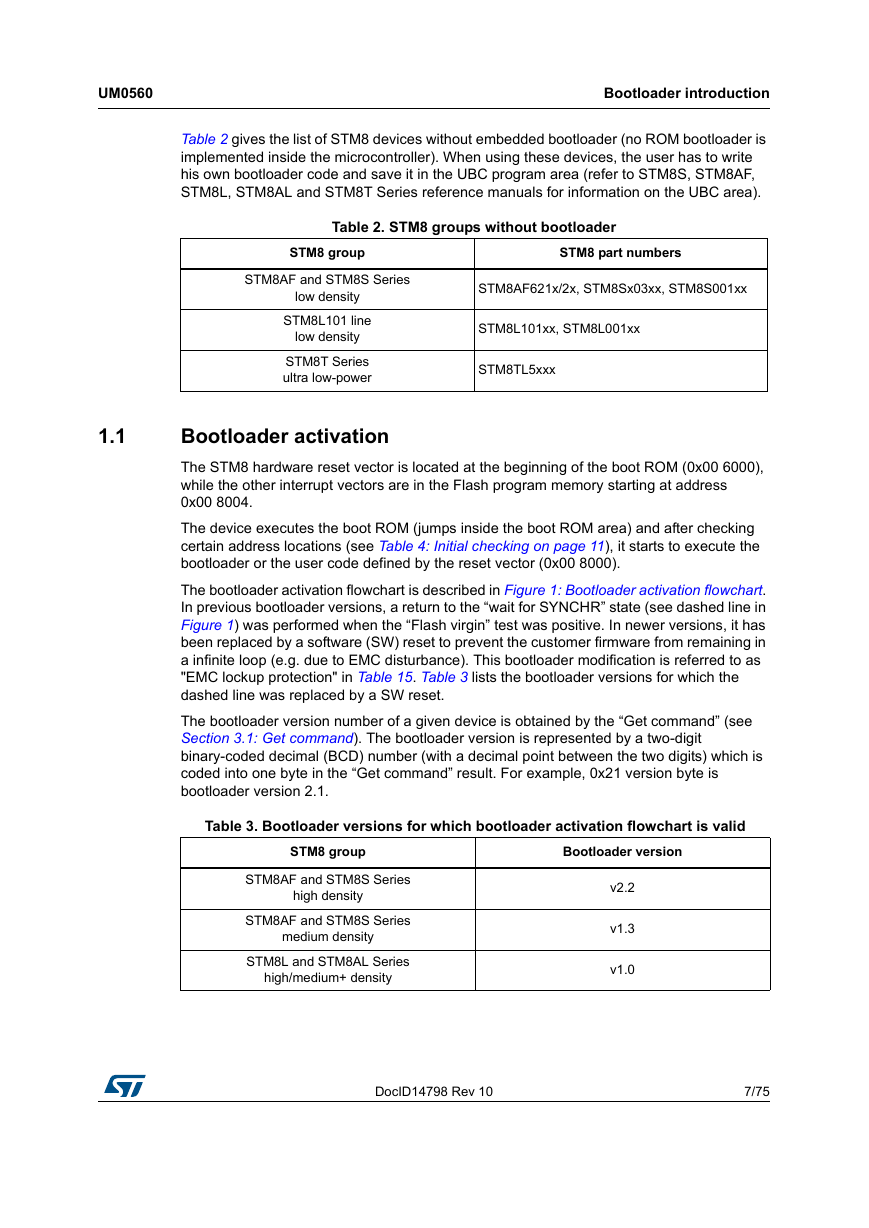









 2023年江西萍乡中考道德与法治真题及答案.doc
2023年江西萍乡中考道德与法治真题及答案.doc 2012年重庆南川中考生物真题及答案.doc
2012年重庆南川中考生物真题及答案.doc 2013年江西师范大学地理学综合及文艺理论基础考研真题.doc
2013年江西师范大学地理学综合及文艺理论基础考研真题.doc 2020年四川甘孜小升初语文真题及答案I卷.doc
2020年四川甘孜小升初语文真题及答案I卷.doc 2020年注册岩土工程师专业基础考试真题及答案.doc
2020年注册岩土工程师专业基础考试真题及答案.doc 2023-2024学年福建省厦门市九年级上学期数学月考试题及答案.doc
2023-2024学年福建省厦门市九年级上学期数学月考试题及答案.doc 2021-2022学年辽宁省沈阳市大东区九年级上学期语文期末试题及答案.doc
2021-2022学年辽宁省沈阳市大东区九年级上学期语文期末试题及答案.doc 2022-2023学年北京东城区初三第一学期物理期末试卷及答案.doc
2022-2023学年北京东城区初三第一学期物理期末试卷及答案.doc 2018上半年江西教师资格初中地理学科知识与教学能力真题及答案.doc
2018上半年江西教师资格初中地理学科知识与教学能力真题及答案.doc 2012年河北国家公务员申论考试真题及答案-省级.doc
2012年河北国家公务员申论考试真题及答案-省级.doc 2020-2021学年江苏省扬州市江都区邵樊片九年级上学期数学第一次质量检测试题及答案.doc
2020-2021学年江苏省扬州市江都区邵樊片九年级上学期数学第一次质量检测试题及答案.doc 2022下半年黑龙江教师资格证中学综合素质真题及答案.doc
2022下半年黑龙江教师资格证中学综合素质真题及答案.doc